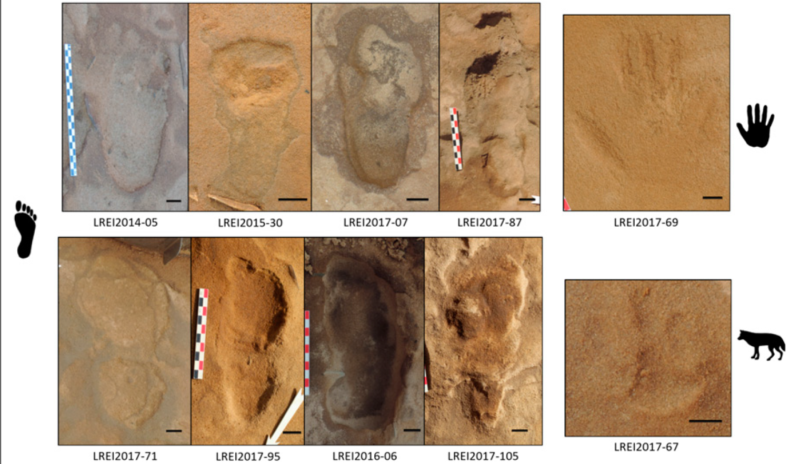80,000-year-old footprints reveal Neanderthal social life

Enlarge / These prints (except the one identified as an animal track) were made by Neanderthals who lived in Western France 80,000 years ago. (credit: Image courtesy of Dominique Cliquet)
A group of footprints left behind in muddy sands 80,000 years ago gives us a better idea of what a Neanderthal social group would have looked like long before Homo sapiens showed up to ruin the neighborhood.
A Stone Age slice of lifeA rapidly growing set of archaeological evidence tells us that Neanderthals thought symbolically, made art and jewelry, buried their dead, and probably tended to their sick and wounded. We have direct evidence of what they ate, what kinds of tools they used, and how they made those tools. But when it comes to what kinds of groups they lived in and how those groups were organized, the best anthropologists can do is look at how modern hunter-gatherers live in similar conditions. If Neanderthals lived like hunter-gatherers live today, they probably spent most of their time in groups of between 10 and 30 people, mostly relatives, made up of a mixture of adults and children.
That lines up well with estimates of how many people could have lived in some of the Neanderthal living areas archaeologists have excavated. Those are good ways to develop ideas about Neanderthal social groups, but they're still indirect. On the other hand (ha!), archaeological evidence doesn't get much more direct than footprints.
Read 11 remaining paragraphs | Comments